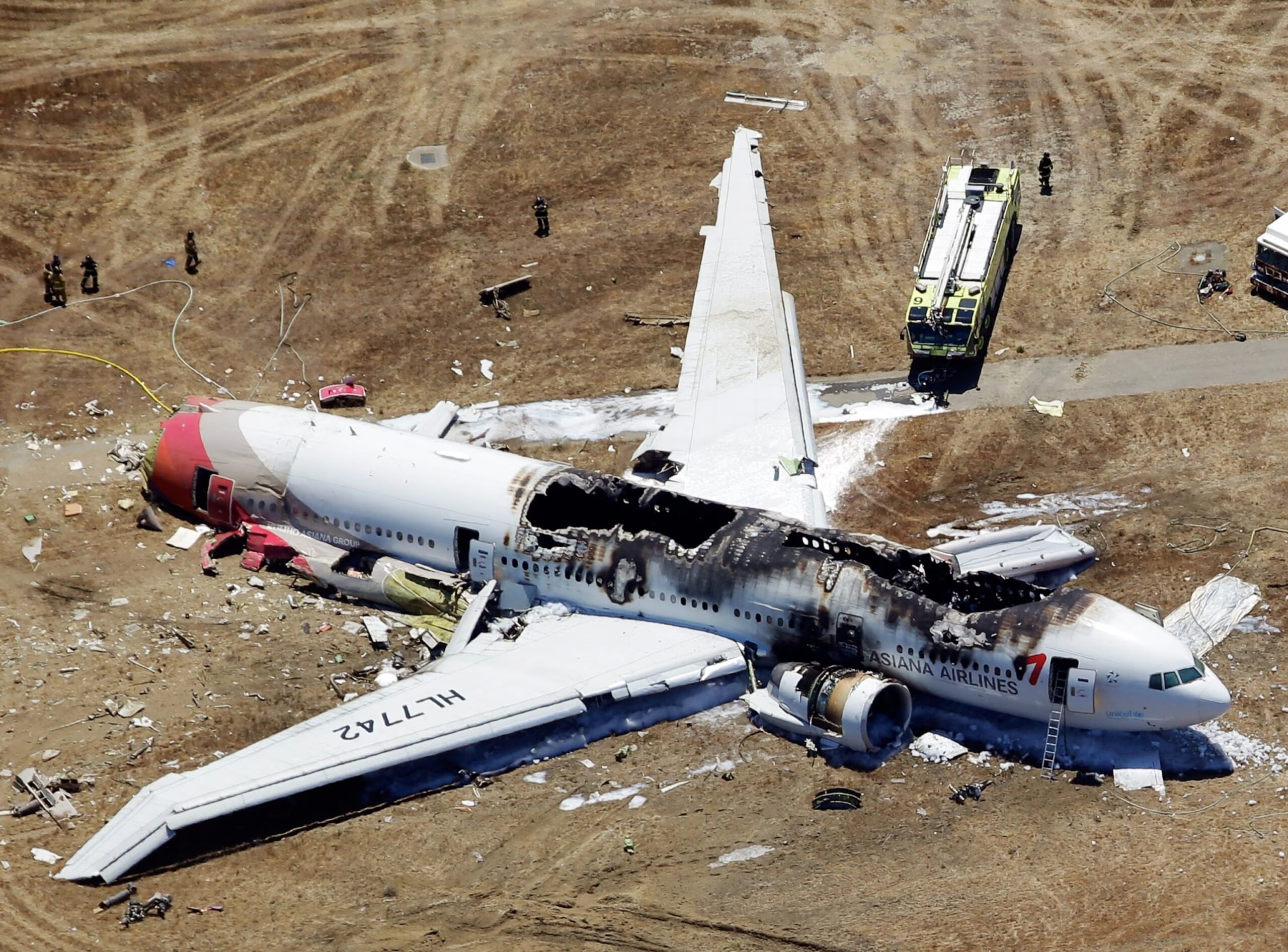The Tragic Mid-Air Collision of Saudi Flight 763 and Kazakh Flight 1907: A Story of Systemic Failures and Lost Lives

On November 12, 1996, the skies above Delhi, India, became the scene of one of the most devastating aviation accidents in history. Two planes, carrying 349 people, were on a collision course that no one could have predicted.
Despite the efforts of highly experienced pilots, the lack of proper infrastructure, outdated technology, and a series of communication and operational failures led to the worst mid-air collision ever recorded. What followed was a catastrophic crash that would forever change the way the world viewed air traffic control and aviation safety.
The Two Planes and Their Crews
The story begins with two aircraft: Saudi Arabian Airlines Flight 763, a Boeing 747, and Kazakhstan Airlines Flight 1907, a Soviet-designed Ilyushin 76. Flight 763, bound for Saudi Arabia, had 289 passengers and 23 crew members aboard, including Captain Khalid al-Shabali, First Officer Nazir Khan, and Flight Engineer Ahmed Idris.
With nearly 10,000 hours of flying experience, Captain al-Shabali was a seasoned pilot, well-versed in the routes to and from Delhi. His crew was experienced, though Flight Engineer Idris had the least flight time at just over 3,000 hours.
Meanwhile, Flight 1907 was on a descent toward Delhi, carrying 27 passengers, many of whom were traders heading to India for a shopping trip.
The aircraft’s crew, led by Captain Alexander Chiropenov and First Officer Ermek Zangerov, also had significant flying experience, but their aircraft, the Ilyushin 76, was antiquated. While the flight crew had a wealth of experience, they lacked proficiency in English, which would prove to be a critical factor in the accident.
The Fatal Miscommunication and Infrastructure Issues
)
Both flights were operating in a heavily controlled airspace divided between military and civilian sectors, a legacy of India’s historical approach to aviation. This system created a serious problem: the only route in and out of Delhi’s airport ran through a narrow corridor, and both incoming and outgoing flights had to share this path.
Though controllers had protested this system for years, nothing had been done to address it. The lack of modern radar technology further compounded the issue, as Delhi’s air traffic control relied on outdated radar systems that only provided limited information.
As the two aircraft neared each other, Saudi Flight 763 took off from Runway 28, climbing to 10,000 feet. Simultaneously, Kazakhstan Flight 1907 was descending toward Delhi, aiming for an altitude of 15,000 feet.
The controllers, using primitive radar equipment, could only see the positions of the aircraft, not their altitude. The strategy was to keep them separated by altitude: the Kazakh plane would remain at 15,000 feet, while the Saudi aircraft would climb to 14,000 feet, passing beneath it.
However, this separation was based on the assumption that both aircraft were adhering to their respective altitudes.
Unbeknownst to the air traffic controller, Flight 1907 was descending below the 15,000 feet altitude. This error was largely due to miscommunication between the cockpit crew and the radio operator, who was responsible for relaying air traffic control instructions.
The radio operator, lacking his own altimeter, had to rely on the cockpit’s instruments and misreported the altitude. As a result, Flight 1907 was descending into a deadly path toward Saudi Flight 763.
The Chain of Events Leading to Disaster
At 6:39 PM, just moments before the planes would collide, the air traffic controller, VK Dota, asked the Kazakh pilots if they could see the Saudi aircraft. With clouds blocking their view, the pilots of Flight 1907 were unable to spot the 747.
Meanwhile, Saudi pilots were not aware that the Kazakh plane had deviated from its assigned altitude. The two aircraft were now on a collision course, traveling toward each other at speeds exceeding 1,000 kilometers per hour.
Seconds before impact, the radio operator on Flight 1907 shouted an urgent warning, “Hold the level!” The captain of Flight 1907, now realizing their mistake, attempted to climb but it was too late.
The aircraft collided with Saudi Flight 763, and the result was catastrophic. The collision triggered an enormous explosion, and both planes plummeted to the ground in flames. There were no survivors.
The Aftermath and Investigation
The collision, which occurred just moments after the controller noticed the two aircraft on his radar, led to the loss of 349 lives. The investigation that followed revealed critical flaws in both the technological infrastructure and human factors that led to the tragedy.
The outdated radar system at Delhi airport, coupled with poor communication and coordination between the crews, was the primary cause of the accident.
The pilots of Kazakhstan Flight 1907, despite being experienced, had not fully understood the gravity of their failure to maintain their assigned altitude. The lack of proper equipment in the cockpit, including a working altimeter for the radio operator and the absence of modern traffic collision avoidance systems (TCAS), left the crew unaware of the impending danger.
This tragic accident highlighted the importance of proper communication, the need for effective altitude monitoring, and the necessity of modern safety systems in the cockpit.

Changes in Aviation Safety
In the wake of the disaster, India made significant changes to its aviation safety protocols. In 1999, it became the second country in the world to mandate the use of TCAS in its airspace.
This system, which was already mandatory in the United States, would have alerted the pilots to the collision risk and likely prevented the tragedy. Additionally, the air traffic control systems at major airports in India were overhauled, with modern radar systems being installed to provide more accurate and real-time information to controllers.
The accident also served as a wake-up call for global aviation. It led to a reevaluation of cockpit procedures, emphasizing the need for clear communication and strict adherence to standard operating procedures (SOPs).
The lessons learned from this disaster have helped shape the modern aviation landscape, improving safety standards worldwide.
Conclusion
The crash of Saudi Arabian Airlines Flight 763 and Kazakhstan Airlines Flight 1907 was a tragic event that claimed the lives of 349 people. The disaster occurred due to a combination of systemic issues, including outdated technology, human error, and inadequate communication.
The pilots of both aircraft, despite their extensive experience, were caught in a web of miscommunication, poor infrastructure, and procedural failures.
However, this tragedy also led to significant improvements in aviation safety, particularly in India. The introduction of modern radar systems, the mandatory use of TCAS, and the reevaluation of cockpit procedures have all contributed to a safer aviation environment.
While the cost was tragically high, the changes made in the aftermath of this disaster have saved countless lives since. The story of Flight 763 and Flight 1907 serves as a poignant reminder of the importance of constantly improving safety standards and infrastructure in aviation to prevent future tragedies.


-1749809049-q80.webp)